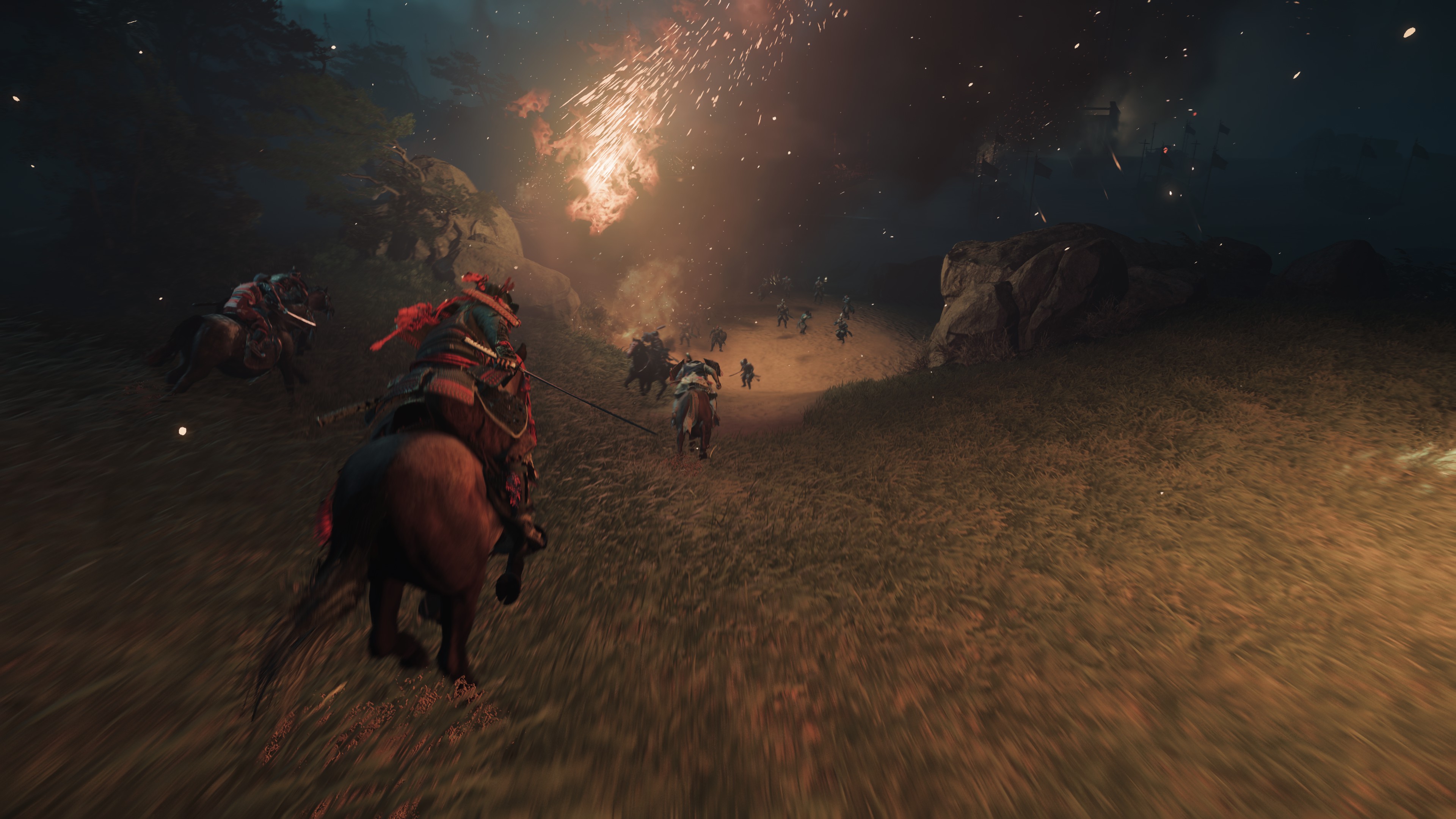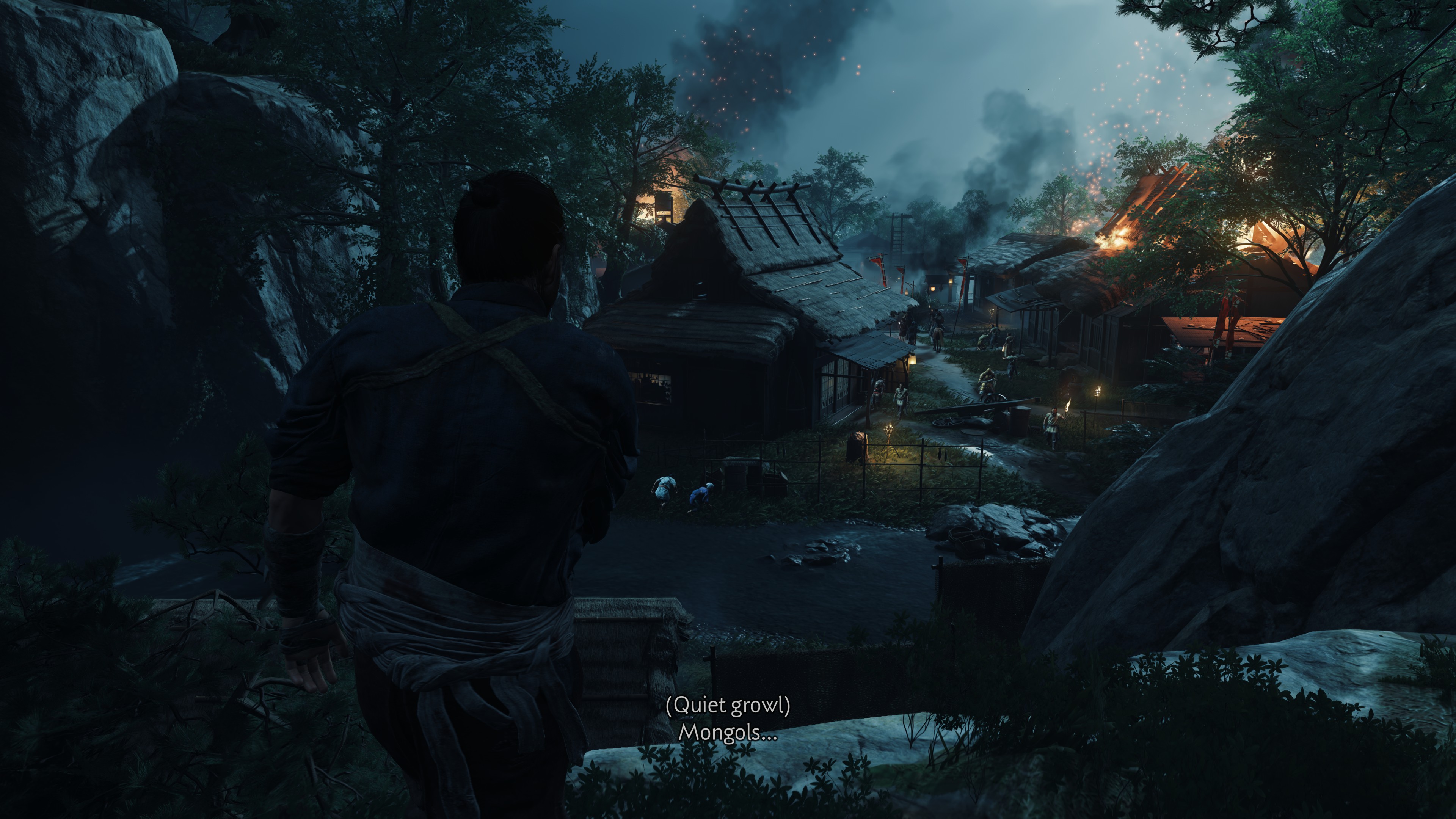Many major games that were once only enjoyable on Sony PlayStation are no longer exclusive. What was unthinkable years ago is now common: console hits become available on PCs over time, and another significant title has just been added to the list. The action-adventure RPG with open-world elements, Ghost of Tsushima, has arrived on Steam.
The End Justifies the Means
In 1274, the island of Tsushima is engulfed in fire and blood. Countless Mongol hordes, led by Kublai Khan's (fictional) cousin Khotun, storm its shores like a relentless storm. A small group of samurai riders know they will die on Komoda Beach if they resist, but surrendering is not an option. After all, they are samurai.
Protagonist Jin Sakai, resigned to certain death, miraculously survives – injured, humiliated, and understandably furious – and his journey for revenge and reclaiming his homeland begins.
Ghost of Tsushima is a romanticized heroic epic openly inspired by the works of famous Japanese director Akira Kurosawa. It surprisingly handles many historical facts accurately, while bending and adapting others as needed for the plot to work. This might offend a history purist, but the average player won't mind, embracing the concessions to pop culture and enjoying a well-crafted samurai spectacle that, while not entirely original, is thoroughly engaging and compelling.
The narrative has two main points: Gathering a handful of loyal followers to free the occupied island from the Mongol Goliath (think The Seven Samurai), and the fact that when everything is at stake, even samurai honor must sometimes take a backseat. Thus, the path to victory is littered with the bodies of Mongol guards slain from the shadows rather than in fair duels.
It is a minor gripe, though, as the game rarely restricts your approach. You can lead Jin as a stealthy assassin leaping across rooftops, striking, and disappearing in a puff of smoke, or as a honorable samurai in majestic armor, challenging Mongols head-on. Given that you earn more than enough skill points throughout the game, Jin can master both approaches, allowing you to switch between them as you like.

Personally, I preferred the warrior path again for a simple reason: while the stealth is good and enjoyable, open combat is simply spectacular. Initially, I was a bit nervous, having already completed Ghost of Tsushima once, unsure if it would captivate me again. This worry proved unfounded, as a few sword swings had me as enthralled as I was years ago on the PlayStation.
The combat system is fairly standard at its core – you need to parry enemy attacks, dodge those that can't be blocked, and fill the gaps with your own offense. Nothing particularly unusual, but the execution is breathtaking. The stunning animations, smooth, fluid, and brutally impactful, turn every fight into a mesmerizing spectacle, and I couldn't get enough of the swordplay even on my second playthrough.
Controls are flawless, precise, perfectly responsive, and always reliable. Switching between four combat stances, each suited to different types of enemies (all looking fantastic), is intuitive and natural thanks to this.
The pinnacle of all this poetry of blood and steel is Jin's ultimate ability, which I was forbidden to mention in my original review because the developers wanted to keep it a surprise. Many of you might be freeing Tsushima for the first time, so I won't spoil the details now either, but know that it is perhaps the most visually and audibly stunning combat skill I have ever seen in a game of this genre. Bravo.
The only aspect that didn't impress me much in the original run and still doesn't now is the open-world design. True, it's beautiful to look at and not lacking in activities, but it feels very... game-like. A prepared playground, so to speak. While not outright offensive, we've seen more interestingly designed worlds before.
However, I don't want to repeat the entire review. For a detailed description of the game mechanics, I refer you to my original text. Let's see how the conversion to a new platform fared.

Computer Performance
Ghost of Tsushima is an exceptional audiovisual experience. If you tend to think of "audiovisual" as primarily visual, know that in this case, both components deserve equal weight – the game looks great (especially in terms of scenography) and the sound design is so good the creators could write a technical monograph on it. Tsushima's sounds are mesmerizing, just as I remembered.
The graphics, while not bad, show their age since the game originally released on previous-generation hardware. It can't quite compete with the likes of Horizon Forbidden West on PC. However, it compensates with fantastic scene composition and lighting that occasionally flirts with kitsch but often creates breathtaking views.
It's a pity the PC version didn't get greater, more detailed draw distances and less fog – these performance tricks were understandable on the PS4, but on modern PC setups, I'd like to see further into the distance. There's also no ray tracing or path tracing, features that can transform a game if implemented well. At least it supports various ambient occlusions, upscaling (DLSS 3, FSR 3, and XeSS), and Frame Generation.
Fans of unusual monitor setups can rejoice, as the PC version supports 21:9, 32:9, and even 48:9 aspect ratios for those who play across three monitors. The controls work well with keyboard and mouse, but if possible, I recommend using a gamepad – ideally, a DualSense, as Ghost of Tsushima on PC supports its haptics and adaptive triggers, adding another layer to the experience.
Loading times are practically non-existent, with fast travel across the map almost instant. Quick fade to black and you're right back in the action – an approach I wish all games would adopt. Developers, take note!
Most importantly, this port is well-optimized. On an R9 5900X + RTX 4090 setup, I achieved around 70 FPS at native 4K without upscaling and with max settings. With DLSS on quality and frame generation enabled, the frame rate soared to 150 FPS. I experienced no frame drops, stuttering, or crashes. This is how it should be done, thumbs up.
Owners of less powerful PCs will find plenty of graphic settings to tweak, with a preview window showing changes immediately, so no need to leave the menu. Overall, this is a very well-done port.
Ghosts
The PC version also includes the later-added Legends multiplayer co-op mode. This separate story lets you and friends (or random online allies) fight supernatural enemies, each player representing one of Jin's skills. Choose from a sword-wielding samurai, a sharpshooting hunter, a rooftop assassin, and a supportive ronin. Legends is fun, and I recommend trying it if you don't mind playing with others.
However, there's a catch: to access multiplayer, you need a PSN account. For those in countries with PSN, this is a minor annoyance, but in 121 countries where PSN isn't available, players simply can't play multiplayer. This decision isn't the game's fault, so I don't reflect it in the rating, but Sony, please reconsider.

Samurai Joy
In conclusion, Ghost of Tsushima remains a highly stylish and enjoyable game, with the PC port standing out for its technical polish. Despite minor issues, it's a must-play for fans of samurai adventures. Banzai!
